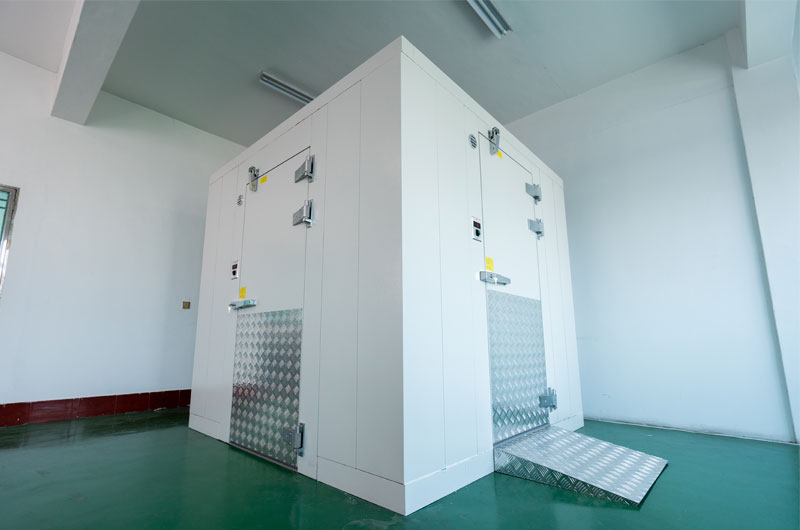Efficient use of space is vital in cold room environments, especially when dealing with limited square footage. A small cold room can still deliver excellent storage performance if designed and managed strategically.
Maximizing every inch of your compact cold storage can help reduce energy costs, minimize product waste, and increase operational efficiency.
1. Assess Inventory Needs and Usage Patterns
Before reorganizing your cold room, evaluate what you store, how frequently products are accessed, and which items are most critical. Divide inventory into categories such as:
- High-turnover products
- Seasonal items
- Bulky, low-movement goods
- Hazardous or sensitive items (e.g., pharmaceuticals)
By understanding these patterns, you can prioritize placement and storage methods to streamline workflow and prevent congestion.
2. Use Vertical Space Effectively
In small cold rooms, floor space is limited, but vertical space often goes underutilized. Tall racking systems or adjustable shelving units allow you to store more products upward instead of outward.
Tips to optimize vertical space:
- Install ceiling-high racking systems with strong, rust-resistant materials like stainless steel or galvanized shelving.
- Use stackable containers or bins to reduce clutter and separate items by type.
- Invest in rolling ladders or step stools for safe access to upper shelves.
Ensure your shelving units maintain airflow and don’t obstruct the cold room’s ventilation system.
3. Choose the Right Racking System
The racking system you use plays a major role in space efficiency. Options for small cold rooms include:
- Adjustable Shelving: Flexible heights to accommodate various product sizes.
- Mobile Racking: Racks can be rolled to create temporary aisles, eliminating fixed aisles and saving space.
- Cantilever Racking: Ideal for long or bulky items like meat logs or packaging rolls.
- Push-back Racking: Store multiple pallets in depth while allowing access from the front.
Each racking solution should balance capacity with ease of access, taking temperature uniformity into consideration.
4. Implement FIFO System
Applying the First-In, First-Out (FIFO) principle ensures older products are used before newer ones, which is critical for perishable goods. To make FIFO work in small cold rooms:
- Design shelving layouts that naturally support FIFO, such as gravity flow racks or bins that feed from the back and dispense from the front.
- Use clear labeling and color-coded inventory tags to indicate production or expiration dates.
- Regularly audit and rotate stock to maintain product integrity and avoid expired goods clogging valuable space.
5. Use Clear Bins and Containers
Small cold rooms often suffer from clutter and disorganization. Transparent, stackable bins make it easier to:
- Identify contents quickly
- Keep similar items grouped
- Prevent spills and contamination
- Reduce search time and handling
Make sure containers are food-grade and compatible with cold temperatures. Label everything clearly to maintain order.
6. Zone the Cold Room Strategically
Divide the cold room into zones based on temperature sensitivity, turnover rate, or product category. This approach allows better organization and reduces unnecessary door opening time, helping maintain a stable internal temperature.
For example:
- Zone 1: High-turnover items near the door
- Zone 2: Bulk storage at the back
- Zone 3: Sensitive items under dedicated sensors or near cooling units
Zoning helps streamline employee workflows and minimizes energy loss during door operation.
7. Invest in Custom Shelving or Modular Systems
Off-the-shelf racking may not always suit your cold room’s unique dimensions. Custom-designed shelving tailored to your space can:
- Fit odd corners or low ceilings
- Allow custom depth and height for unusual packaging
- Improve floor-to-ceiling usage
Modular racking systems also allow for flexible adjustments as your inventory needs change.
8. Maintain Clear Aisles and Access Points
No matter how tight space is, don’t compromise on accessibility. Leave at least 18–24 inches of aisle space between shelves for safe and efficient movement.
- Avoid overstacking pallets or bins on the floor
- Ensure emergency exits or temperature sensors remain accessible
- Use narrow but sturdy carts for transportation within the cold room
Poor access can lead to damaged goods, safety issues, and reduced productivity.
9. Control Moisture and Condensation
A cluttered cold room with poor airflow and insulation can encourage condensation and mold growth. Moisture can damage packaging, reduce shelf life, and even collapse cardboard boxes.
To combat this:
- Use ventilated shelving to allow proper air circulation
- Avoid pushing items against the wall where condensation may occur
- Schedule regular cleaning and defrosting
- Use plastic pallets instead of wood to resist moisture absorption
Cleanliness and airflow are just as important as space efficiency.
10. Monitor Temperature Zones with Smart Sensors
Smart monitoring systems help optimize space usage by providing real-time temperature and humidity data. With better control, you can confidently store a broader variety of products in different sections without risking spoilage.
Benefits include:
- Detecting hot or cold spots
- Preventing overloading in one zone
- Automating alerts to avoid temperature breaches
Technology can improve layout decisions and preserve product quality.
11. Train Staff in Best Practices
Even the best cold room design will fall short without proper management. Train your team to:
- Return products to their designated spots
- Avoid blocking air vents or stacking items beyond safe height limits
- Follow FIFO and labeling procedures
- Report space constraints or damaged racking systems
Well-trained staff ensure that space optimization efforts are consistently upheld.
12. Review and Reorganize Regularly
Storage needs evolve, and small cold rooms require frequent reassessment. Schedule monthly or quarterly reviews to:
- Eliminate slow-moving or obsolete items
- Adjust shelving layouts
- Recalibrate temperature zones if needed
- Identify opportunities to digitize inventory tracking
Flexibility and proactive management are key to staying efficient in compact storage environments.

